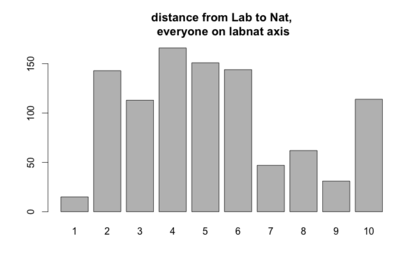Posts by David Hood
Last ←Newer Page 1 2 3 4 5 Older→ First
-
Speaking of voting, this is entertaining
http://qz.com/491061/because-of-an-electoral-mishap-a-us-tax-vote-will-be-decided-by-a-single-woman/
-
The unmorality of the idea seems to be getting a lot of criticism in its application to US politics at the moment, because it is so polarised the "median" is a pretty empty space
-
Speaker: The problem is Serco, in reply to
incentivise them around the recidivism rate
and, for that matter, the "prisoners leaving jail intact" rate.
-
I think the graph is fundamentally misleading in that it is based solely on the Labour National dimension, and winning the median of that means a party is pretty closed to being able to govern by themselves- it completely ignores coalitions.
-
Polity: Meet the middle, in reply to
There are up to ten points of steps and I wanted something that divided evenly by 10, 9, 8,7 etc- I could also have gone to decimals.
-
As I understand it the left right metaphor is one of strategic positioning (hence the move to to middle arguments) rather than a multidimensional strength of signal metaphor.
I spent entirely too long this evening looking up what colour election orange was. I am, for the record, now using #f89828 for graphs about the election. -

So if you pretend no-one but National and Labour were running in the 2011 election, and pretend nothing but how the voters placed the parties left to right against where they placed themselves matters, and scale all the voters distances between the parties so they match, this is how it looks.
The red vertical line is the position of Labour, so anyone to the left is at least as left as Labour. The blue is National, the purple is the median voter in this highly artificial model.
Personally I think this is a silly model to use. Even doing everything to make it look like a right left case, I still read it as the influence of National was extending further than the influence of Labour, there are more people left of Labour voting National than there are right of National voting Labour.
showing my working in R
-
Polity: Meet the middle, in reply to
That was just by was of example "around 4" I didn't work it out with this particular group. I certainly would expect environmental questions would make more sense explaining the green vote, but haven't checked anything but the self reported location.
-

So one problem with looking for the median voter on the labnat axis is that the NZES respondents (at least the small subset we can talk about with respect to this question) is people have placed Labour and National different distances apart (see graph), so where hey are self reported as in relation to that will mean different things (calling yourself a 7 when you call Labour a 5 and National a 10 means something different to when you call yourself a 7 and call Labour a 0 and National a 7. This can be compensated for by scaling everyones responses to a range from Labour at 0 and National at 30240 with the self reporting figure scaled to match.
Clearly most people go "Labour could be more left wing, National could be more right wing, there is about a 4 point difference" but some people go "Labour is 0 and National is 10"
-
Just putting some numbers in. Going with the 3101 entries, and going with Robs original Left Right distinction (which I don’t think is very meaningful but am going along with for the point of view of doing something clever with the numbers.
Of the 3101 entries in NZES
1587 voted in 2008 and 2011 for National and Labour (so might actually be on the labnat spectrum which Rob is working with, I would argue other parties form their own axes (I say “might” because if they have only voted for one party you don’t know that is their axis of movement, but they are one the line)
The number drops to 1114 when you include only those that can actually put themselves, Labour, and National on a Left-Right axis (as you can’t actually measure things otherwise)
You then need to take out the 128 that place Labour equal to or to the right of National, as then aren’t moving along the same left-right axis as everyone else. Leaving 986.
Now, as to the 33%/33%/33% median voter, If we call someone who places themselves equal to or to the left of labor as left, equal to or to the right of National as right, and in-between the (contested) middle, we get a proportion of voters:
Left = 22.7%
Middle = 35.3%
Right = 42.0%Which may seem a bit grim until you realise that this is just the LabNat axis and if we repeat the process with the Greens and National we get 762 that have voted only Greens or National and a spread of
Green = 11.8 %
Teal = 36.7%
Blue = 51.4%As an observation, this is probably why “the threat of the Greens” is used now and then by National, there are more “will never be green” votes on the blue-green axis so it gives a better group to demonise. {Edit it also reflects that left-right is a bad primary classification for Green support}
But because National has no real allies (parties where the people voting like National better than the party they are voting for are pretty clearly voting for National in a strategic way) it means that they are potentially vulnerable along every axis.
More to come, building on this, focusing specifically on the left-right axis Rob was posting about (which I don’t like, I say again).

